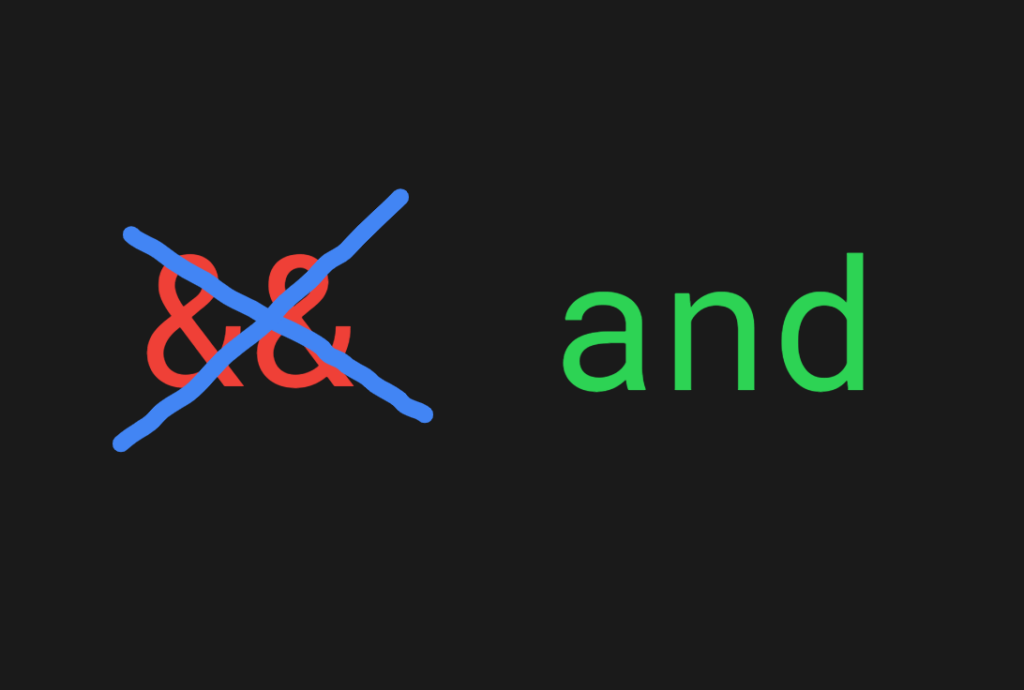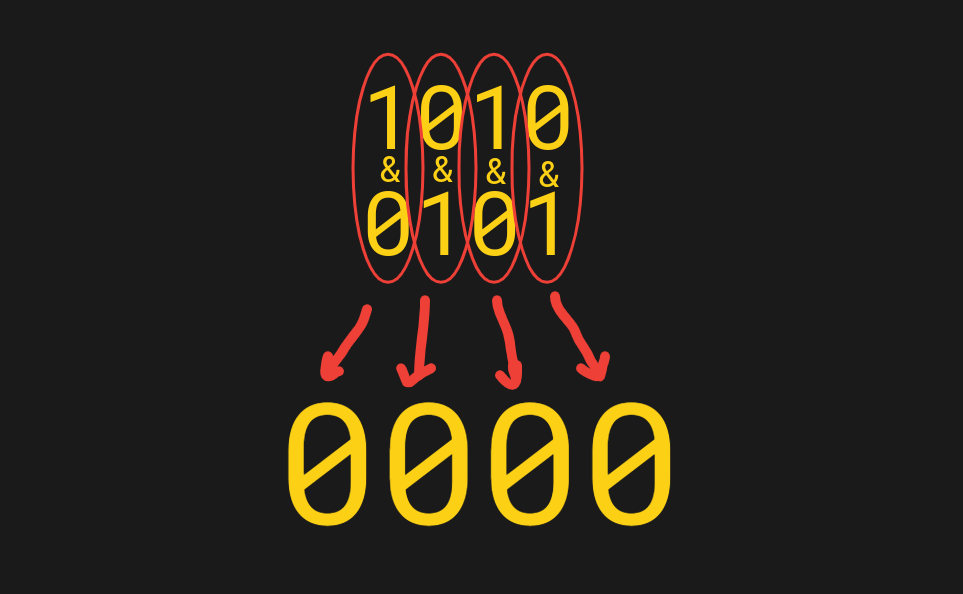
In Python, the and keyword is used to represent the logical AND operator.
For example:
if x > 0 and y > 0:
# Do something
The and keyword is used in a similar way to the && operator in other programming languages. It will evaluate to True if both operands are True, and False otherwise.
If you came from another coding language and didn’t know that Python && operator is actually and, you might find it handy to know that the or operator || operator is just plain or and the negation operator ! is not.
if not x > 0 or y < 0:
# Do something
As you probably already know, the and operator has higher precedence than the or operator. This means that in an expression with both and and or operators, the and operator will be evaluated first.
For example, Python sees this expression:
x > 0 and y > 0 or z > 0
Like this:
(x > 0 and y > 0) or z > 0
In the above code, the and operator will be evaluated first, and the or operator will be evaluated second. This means that the expression is True only if x > 0 and y > 0 both are True, regardless of the value of z.
Truth Table of the ‘and’ Operator
A truth table is a mathematical table used to determine the truth value of a logical expression for all possible combinations of its input variables.
The truth table for the and operator in Python looks like this:
A B A and B -------------------- T T T T F F F T F F F F
This is no different than the traditional truth table of the AND operator logic.
Here, T represents a true value, and F represents a false value. The truth table shows that the logical AND operator only evaluates to true if both operands are true. For all other combinations of input values, it evaluates to false.
For example, if A and B are two variables with values True and False, respectively, the expression A and B would evaluate to False.
Python Has a & Operator Too…
The bitwise AND operator in Python is represented by the & symbol. This operator performs a bitwise AND operation on two numbers, treating each number as a sequence of binary digits (bits).
Here is an example of the bitwise AND operator in action:
# Declare two variables with integer values x = 10 y = 5 # Perform a bitwise AND operation on x and y result = x & y # Print the result print(result)
Output:
0
In this code, the two variables x and y are declared with the values 10 and 5, respectively.
When applying the bitwise and operation, these numeric values are converted to their binary representation. This turns x to 1010 and y to 0101.
The bitwise AND operator is then used to perform a bitwise AND operation on these two binary numbers, which results in the binary number 0000.
Here’s an illustration of why this happens.


Bitwise operators can be useful in certain situations, such as when working with binary data or performing low-level operations on numbers. However, they are not commonly used in most Python programs and may not be familiar to many Python developers.
Other Python Operators
Python has a wide variety of operators that can be used in different ways in your code.
In case you’re new to Python, make sure to read my comprehensive guide to Python operators. It serves both as a great introduction to operators as well as a nice overview of the operators in Python for experienced coders.
Anyway, Python has the following operators:
1. Arithmetic operators
These operators are used to perform basic arithmetic operations, such as addition, subtraction, multiplication, and division.
For example, the + operator is used to adding two numbers, and the – operator is used to subtracting one number from another.
2. Comparison operators
These operators are used to compare two values and determine their relationship to each other.
For example, the == operator is used to check if two values are equal, and the > operator is used to check if one value is greater than another.
3. Logical operators
These operators are used to combine the results of multiple comparisons or other logical operations.
For example, the and operator is used to evaluate to True only if both of its operands are True, and the or operator is used to evaluate to True if either of its operands is True.
4. Bitwise operators
These operators are used to perform bitwise operations on binary numbers.
For example, the & operator is used to perform a bitwise AND operation, and the | operator is used to perform a bitwise OR operation.
5. Assignment operators
These operators are used to assign a value to a variable.
For example, the = operator is used to assign a value to a variable, and the += operator is used to add a value to a variable and assign the result to the same variable.
New to Python?
If you are new to Python and are not familiar with its syntax and conventions, I would recommend that you start by reading a good Python tutorial or book. This will help you learn the basics of the language and understand how it works.
But if you’re familiar with coding before Python, find a good Python cheat sheet and use it as your reference book.
Overall, the best way to learn Python is to practice using it and to refer to resources such as tutorials and documentation when you need help or clarification.
Remember, it’s not a shame to forget about syntax. I have nearly 10 years of experience in coding yet I still have to come back to check the syntax for the basics. This happens especially if I’ve taken a break from a particular language and used another instead.
Thanks for reading. Happy coding!